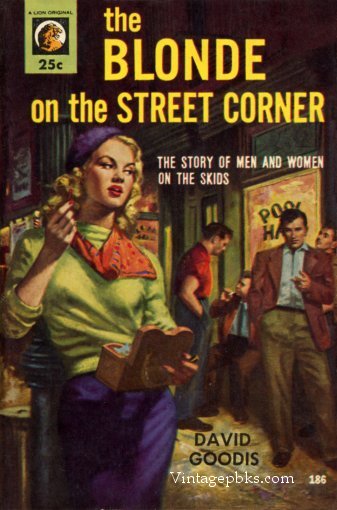
What this is is an excruciating, bitter, brilliant example of pulp noir
fiction from the Fifties. Even though it’s set in the Thirties it
reflects the same post-WWII disillusionment that the Beat writers mined
— but it’s much tougher and starker, much less romantic and
pretentious than any Beat fiction. It makes William S. Burroughs look
like the James Branch Cabell of despair.
Many of Goodis’s pulp novels have been made into movies — Truffaut’s “Shoot
the Piano Player” was adapted from Goodis’s “Down There” — but not
this one. It’s just too grim, I guess, and its eroticism too perverse.
But its jagged broken-glass style and unflinching gaze are also
exhilarating.
[The cover above is from the original edition, but it’s still in print between less lurid wraps.]
